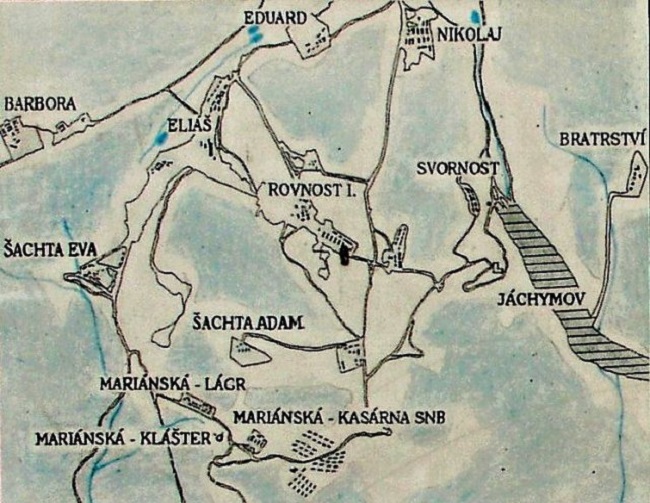
Archaeologists from the University of West Bohemia will conduct research on two camps in the Jáchymov area
 |
Plzeň - The Department of Archaeology at the University of West Bohemia in Plzeň will conduct archaeological research this summer on two of the 11 communist prison camps in the Jáchymov region, named Nikolaj and Eliáš. Last year, the department's staff and students researched concentration camps in Lety near Písek and Treblinka in Poland, and this May they participated in research at a camp in central Norway. The field comparative research is part of a European project involving six universities. This was said to ČTK by the head of the department, Pavel Vařeka.
"We will focus on the Jáchymov uranium gulag, that is, the camps associated with uranium mining," he stated. They were established in 1949 and 1950 and operated until 1958. Nikolaj was originally a forced labor camp that was transformed into a penal camp, while Eliáš was a penal camp. "It is said that as many as 40,000 people passed through all 11 camps," Vařeka said.
The research is, just like in Lety, Treblinka, and the Norwegian Falstad, part of a large European project focused on concentration, extermination, prisoner of war, labor, and internment camps. "We are working on it with our foreign partners (five European universities). During World War II, Europe was a landscape full of camps; we call it campscape," Vařeka mentioned. The namesake field comparative archaeological research is part of the HERA (Humanities in the European Research Area) program. The Plzeň department focuses on mapping the remains of camps using archaeological methods. "It will take about another 1.5 years, we are halfway through," he said.
In May of this year, Plzeň archaeologists participated in research at a Nazi concentration camp in Falstad, Norway. "There were primarily Norwegians from the resistance, many Soviet and Yugoslav prisoners, but also Czechoslovakians," Vařeka stated. The research focused on a former dumping ground behind the barbed wire of the now heritage-protected camp. "The rubbish provides an incredibly interesting insight into everyday life; what the food was like, there are also clothing parts and items that the prisoners used," Vařeka noted. For example, they found a porcelain plate marked Made in Czechoslovakia, which presumably belonged to the SS guards, and Czech tiles in the commander's bathroom. They plan further research with a university in Trondheim and the memorial in Falstad.
Last year, the department also conducted a survey on a meadow next to a pig farm in Lety near Písek. They confirmed the existence of a former Romani camp that was burned down at the end of World War II.
According to Vařeka, at the end of the 19th century, three "inventions" came together - barbed wire, machine guns, and also the concept of concentration camps, where inconvenient groups of people were placed. The first camp, according to him, was in Cuba at the end of the 19th century when Spain was resisting the independence of its colonies. The British then used concentration camps during the Boer War in southern Africa, and this concept was subsequently adopted by totalitarian regimes. "During World War II alone, there were 20,000 camps in the so-called Third Reich and in occupied territories," he said. Additionally, one must account for the system of communist gulags that arose in the former USSR and other countries, including Czechoslovakia.
The English translation is powered by AI tool. Switch to Czech to view the original text source.
0 comments
add comment









